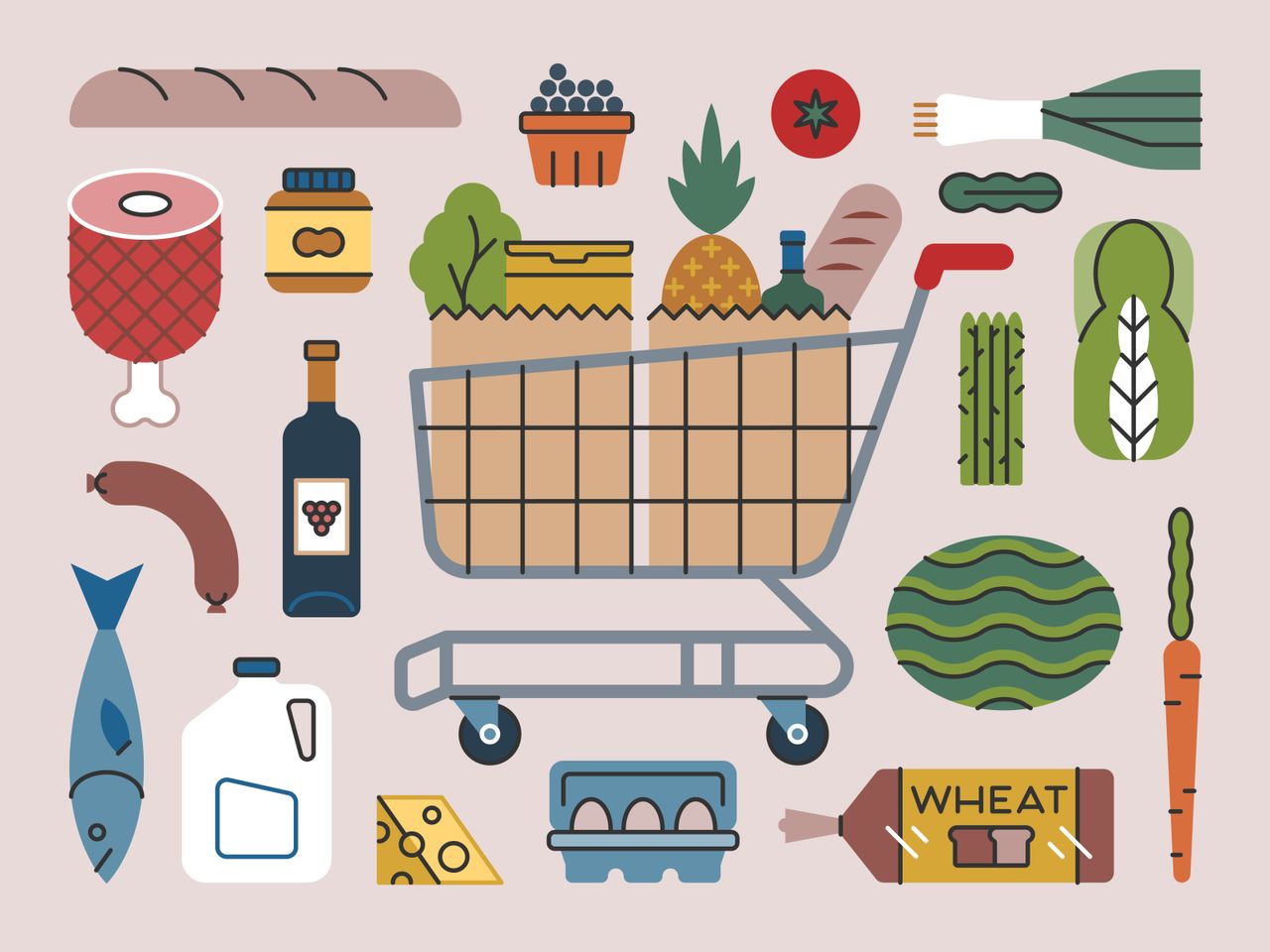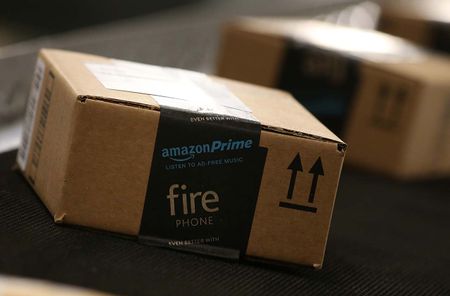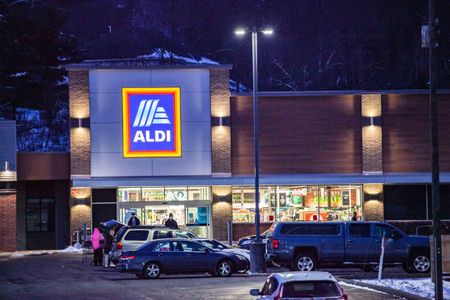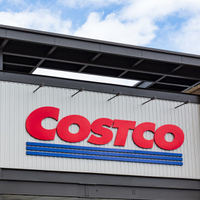Good Places to Buy Organic Foods Without Breaking the Bank
Inflation has driven grocery bills up, and for people who want to shop organic, these places can help your wallet.


Mention organic food to most shoppers and they’ll likely respond that it’s too expensive. For the most part, they’d be right. Because of high inflation, food prices for non-organic foods increased 9.9% in the last year, and the price for organic foods went up even more.
A recent study from Lending Tree, based on retail pricing data from the U.S. Department of Agriculture (USDA) found that prices for organic fruits and vegetables rose 13.1% over the last year. Price increases varied among specific foods, with organic strawberries going from $3.08 a pound to $9.99 — a 224.4% increase.
So what do you do if you want to buy organic for less? Saving money on organic foods doesn't just come down to what you buy, but where you buy it. Try shopping at these places to keep costs down, noting that you should price compare on specific items, as some products cost less elsewhere.

Sign up for Kiplinger’s Free E-Newsletters
Profit and prosper with the best of expert advice on investing, taxes, retirement, personal finance and more - straight to your e-mail.
Profit and prosper with the best of expert advice - straight to your e-mail.
Trader Joe’s. This quirky grocery chain, with more than 500 locations across the U.S., is known for its low prices. Many of its organic offerings are bargains compared with similar products at supermarkets and organic grocers. Fruits and vegetables, beef, yogurt and coffee are among its top organic deals.
For example, we found that a 5-ounce package of organic spinach & spring mix was $1 less at Trader Joe’s than at several supermarkets we checked. Learn more about the secrets to shopping at Trader Joe's.
Aldi. This low-cost supermarket chain originated in Germany and now operates over 2,000 locations in the U.S. Aldi keeps its prices low because of its no-frills approach – you have to bag your own groceries, for example – and its lineup of exclusive brands.
The organic selection isn’t extensive, but the items that are available tend to be priced lower than similar products at supermarkets and Whole Foods. For example, a 24-ounce jar of organic marinara sauce at Aldi’s is between 50 cents and more than $1 less than similar sauces at other grocers we checked.
Walmart. Yes, Walmart. The mega-retailer has used its size and scale to make organic affordable, Walmart spokesperson Molly Blakeman said in 2015. “We don’t think people should have to pay more to put organic on the table.” Walmart stocks over 1,000 organic grocery items, including in the Great Value line. A 51-ounce bottle of organic extra virgin olive oil costs close to $10.
Warehouse clubs. You’ll pay $50 or more a year to join a warehouse club such as Costco, BJ’s or Sam’s Club. But you can recoup the annual fee with the savings you’ll get by buying warehouse clubs' discounted bulk items, especially organic fare.
For example, BJ’s organic chicken breasts are about $1 less per pound than at the other stores we checked; a 36-ounce jar of organic peanut butter costs under $10. BJ’s carries dozens of organic items, and both BJ's and Sam's Club offer free one-day passes if you want to check out the organic offerings before committing to a membership (there are surcharges for non-members, though).
It is worth noting that to take full advantage of warehouse clubs’ discount pricing, you need to be able to consume the entire amount of your bulk purchases before those items spoil or expire. See 7 Costly Mistakes Shoppers Make at Warehouse Clubs for more.
Stack Social is offering a Gold Star Membership + $20 Digital Shop Card for the price of a $65 Gold Star membership.
It is also offering an Executive Gold Star Membership + $40 Shop Card for the price of a $130 Executive Gold Star membership.
Farmers markets. Because prices can vary greatly from market to market and even vendor to vendor at the same market, it’s hard to claim that this option is one of the best places across the board to buy organic on a budget. Plus, although you might find an abundance of naturally grown or raised produce, you likely won’t find many — or any — items that are actually certified organic, which requires meeting requirements set by the U.S. Department of Agriculture.
Nonetheless, it’s worth doing some comparison shopping of your own at your local farmers market to see how its prices stack up. There’s a good chance you’ll find that it won’t cost you more than shopping at the supermarket – and might cost even less if you follow these tips for saving money at farmers markets.
The bottom line
While organic food can be pricey, smart shopping strategies can help you save. Comparing prices across different retailers — whether it’s Trader Joe’s, Aldi, Walmart, warehouse clubs or local farmers markets — can make a big difference.
By being flexible with where you shop and taking advantage of bulk deals, store brands and seasonal produce, you can enjoy organic foods without overspending.
RELATED CONTENT
Get Kiplinger Today newsletter — free
Profit and prosper with the best of Kiplinger's advice on investing, taxes, retirement, personal finance and much more. Delivered daily. Enter your email in the box and click Sign Me Up.

Award-winning journalist, speaker, family finance expert, and author of Mom and Dad, We Need to Talk.
Cameron Huddleston wrote the daily "Kip Tips" column for Kiplinger.com. She joined Kiplinger in 2001 after graduating from American University with an MA in economic journalism.
-
 5 Gorgeous Lake Houses for Sale Around the US
5 Gorgeous Lake Houses for Sale Around the USKiplinger's "Listed" series brings you a collection of beautiful houses for sale on lakes.
By Alexandra Svokos Published
-
 Should You Start a Business in Retirement? Here's What You Need to Know
Should You Start a Business in Retirement? Here's What You Need to KnowWhether you've always wanted to own your own company or just want to stay active or have more retirement money, starting a business in retirement is possible. Here's what to consider.
By Maurie Backman Published
-
 Five Reasons You Shouldn't Shop on Amazon Prime Day
Five Reasons You Shouldn't Shop on Amazon Prime DaySmart Buying Think twice before getting lured into buying a bunch of stuff you don't need just because it's on sale.
By Andrea Browne Taylor Last updated
-
 Five Ways to Save on Vacation Rental Properties
Five Ways to Save on Vacation Rental PropertiesTravel Use these strategies to pay less for an apartment, condo or house when you travel.
By Cameron Huddleston Last updated
-
 How to Avoid Annoying Hotel Fees: Per Person, Parking and More
How to Avoid Annoying Hotel Fees: Per Person, Parking and MoreTravel Here's how to avoid extra charges and make sure you don't get stuck paying for amenities that you don't use.
By Cameron Huddleston Last updated
-
 Best Cash Back Credit Cards of 2025
Best Cash Back Credit Cards of 2025Credit Cards If you're searching for a credit card that rewards you for everyday purchases, we've chosen the best.
By Ellen B. Kennedy Last updated
-
 Aldi, Lidl Cut Inflation-Rocked Prices Ahead of Thanksgiving Grocery Shopping
Aldi, Lidl Cut Inflation-Rocked Prices Ahead of Thanksgiving Grocery ShoppingThe German no-frills chains are aiming to allay concerns about skyrocketing grocery prices.
By Bob Niedt Published
-
 How to Spend $1,000: Find Cheap (or Free) Online Courses to Build Career Skills
How to Spend $1,000: Find Cheap (or Free) Online Courses to Build Career SkillsSmart Buying There's a huge array of skill-building online courses that can level up your career for under $1,000.
By Kim Clark Published
-
 MoviePass is Relaunching. Should You Sign Up?
MoviePass is Relaunching. Should You Sign Up?Smart Buying The subscription discount movie card company has a checkered past and an army of disillusioned former cardholders. If you want to try the reboot, you’ll need to hurry.
By Bob Niedt Published
-
 HBO Max Is Offering Huge Discounts
HBO Max Is Offering Huge DiscountsSmart Buying Looking for a streaming service deal? Warner Bros. Discovery is cutting the price of HBO Max.
By Bob Niedt Published
